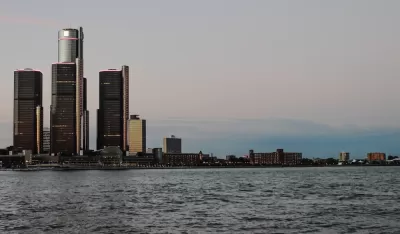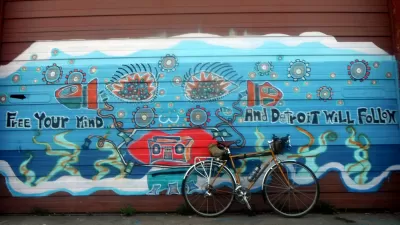In key areas like jobs and housing, the numbers show a definite Motor City rebound since the recession. But a closer look reveals uneven gains and weakness next to state averages.

The Detroit recovery narrative depends on positive citywide trends in the years since the Great Recession, like higher home sale prices and lower jobless rates. But as John Gallagher points out, "the problem with those upbeat statistics is that the deeper we dive into the data, the less sure we are of what story data tell us."
"It's not just that data cannot capture ephemeral concepts like hope, resilience and racial justice. It's also that it's too easy to cherry-pick statistics that make one's case while ignoring inconvenient facts."
One of those facts, Gallagher writes, is that Detroit's jobless rate remains at least twice that of the state of Michigan and the nation as a whole. And most of those new jobs have emerged downtown, not across the city as a whole.
Detroit's housing market tells "a similar story." Though sale prices have risen since the recession, they're still below state averages. And while new homes are going up, "the vast majority of those new residential units being built are found in and around the downtown core, not in Detroit's distressed neighborhoods." Mortgage loans are rare or nonexistent in most parts of Detroit. Renting, cash purchases, and land contracts remain the norm.
FULL STORY: Detroit can't cherry-pick statistics, ignore inconvenient facts

Alabama: Trump Terminates Settlements for Black Communities Harmed By Raw Sewage
Trump deemed the landmark civil rights agreement “illegal DEI and environmental justice policy.”

Planetizen Federal Action Tracker
A weekly monitor of how Trump’s orders and actions are impacting planners and planning in America.

The 120 Year Old Tiny Home Villages That Sheltered San Francisco’s Earthquake Refugees
More than a century ago, San Francisco mobilized to house thousands of residents displaced by the 1906 earthquake. Could their strategy offer a model for the present?

LA’s Tree Emergency Goes Beyond Vandalism
After a vandal destroyed dozens of downtown LA trees, Mayor Karen Bass vowed to replace them. Days later, she slashed the city’s tree budget.

Sacramento Leads Nation With Bus-Mounted Bike Lane Enforcement Cameras
The city is the first to use its bus-mounted traffic enforcement system to cite drivers who park or drive in bike lanes.

Seattle Voters Approve Social Housing Referendum
Voters approved a corporate tax to fund the city’s housing authority despite an opposition campaign funded by Amazon and Microsoft.
Urban Design for Planners 1: Software Tools
This six-course series explores essential urban design concepts using open source software and equips planners with the tools they need to participate fully in the urban design process.
Planning for Universal Design
Learn the tools for implementing Universal Design in planning regulations.
Ada County Highway District
Clanton & Associates, Inc.
Jessamine County Fiscal Court
Institute for Housing and Urban Development Studies (IHS)
City of Grandview
Harvard GSD Executive Education
Toledo-Lucas County Plan Commissions
Salt Lake City
NYU Wagner Graduate School of Public Service





























